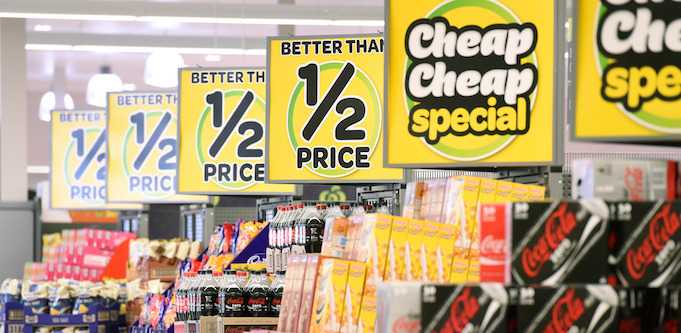
Source: AAP/Dan Peled
Woolworths has backflipped on its controversial ‘Woolworths Dollars’ rewards program 10 months after shoppers slammed the supermarket giant for changing its loyalty scheme.
In a document sent to store managers and leaked to Australian Business Traveller, the retailer said it will again offer points for money spent in-store.
The retailer modified its program in January this year, after furious shoppers labelled the ‘Dollars’ program as “pointless” and “a waste of time” and bemoaned the decision to favour in-store discounts over Qantas Frequent Flyer points. This change allowed shoppers to earn Frequent Flyer points again, with a conversion rate of $10 Woolworths Dollars to 870 Frequent Flyer Points.
The latest changes are expected will scrap the Dollars program and the associated orange tickets, which showed customers which products to purchase in order to earn Woolworths Dollars. Instead, shoppers will now earn one point for every dollar spent.
These dollars don’t need to be spent at just Woolworths supermarkets, with further changes expected to allow customers to earn points at Caltex petrol stations and BWS liquor stores. The changes are set to be implemented from August 31 onwards.
The points themselves can then be converted into Dollars, which will be discounted from the customer’s next shop, with 2000 points to convert into $10.
Frequent Flyer points will also still be made available to shoppers in the same method as before, with $10 the equivalent of 870 points.
Editor of Australian Business Traveller David Flynn told Fairfax the new scheme was bad news for Frequent Flyer point’s fans, saying it will cost “twice as much”.
“You’ll need to spend around $2000 to earn 870 Qantas Points, and you’ll need 16,000 points for a return economy ticket between Sydney and Melbourne. So if you want to spend almost $40,000 on groceries to get a free flight, go right ahead,” Flynn said.
In a statement, Ingird Maes, director of loyalty and customer data at Woolworths said the retailer had “acknowledged that we didn’t deliver enough orange ticket offers in-store and while many of our members have been rewarded well, too many have not”.
“This isn’t the end of improvements to our loyalty program. We’ll continue to listen to our members and introduce new, attractive features to evolve the program in line with member preferences and feedback,” Maes said.
What makes a good rewards program
Gary Mortimer, retail expert and professor at Queensland University of Technology, told SmartCompany shoppers in general are “not that loyal” to one particular retailer.
“Studies have been done which show that shoppers will have at least four loyalty cards in their wallets at once, so these programs aren’t driving much of an attitude for loyalty,” Mortimer says.
Mortimer says Woolworths Rewards is true to its name, functioning more as a rewards program rather than a loyalty program. He believes the habitual nature of grocery shopping lends itself more to rewards over loyalty programs.
“Other factors apart from points are better for driving loyalty, like strong customer service,” he says.
However, many shoppers find rewards programs are all the same and suffer from a “lack of differentiation”.
“Shoppers criticise the programs for taking too long to accrue points and for the stores taking too much personal data. Consumers prefer immediate rewards,” Mortimer says.
“Fifty-four percent of shoppers don’t take full advantage of rewards programs, and 30 percent aren’t even redeeming the points they have.”
Mortimer believes a strong rewards program prioritises “customisation, individuality, flexibility, and immediacy of rewards”.
“I think a move away from transactional based rewards schemes is required.”
Bri Williams, behavioural specialist at People Patterns, told SmartCompany consumer perception plays “a big role” in the attractiveness of a rewards program.
“Customers will keep using a rewards program if they believe they’re getting a good deal,” Williams says.
“Myers, for instance, sends out random, intermittent vouchers, which get people back into the stores and makes them feel like they’re getting money off.”
Williams also believes the secret to rewards programs is to keep it simple, and Woolworths’ changes are a “step in the right direction”.
“They’re simplifying the mechanism, but they have to be careful people don’t feel the reward is too far away,” she says.
“If you’re told you have to reach 2000 points for any benefit, it feels like quite a lot.”


COMMENTS
SmartCompany is committed to hosting lively discussions. Help us keep the conversation useful, interesting and welcoming. We aim to publish comments quickly in the interest of promoting robust conversation, but we’re a small team and we deploy filters to protect against legal risk. Occasionally your comment may be held up while it is being reviewed, but we’re working as fast as we can to keep the conversation rolling.
The SmartCompany comment section is members-only content. Please subscribe to leave a comment.
The SmartCompany comment section is members-only content. Please login to leave a comment.